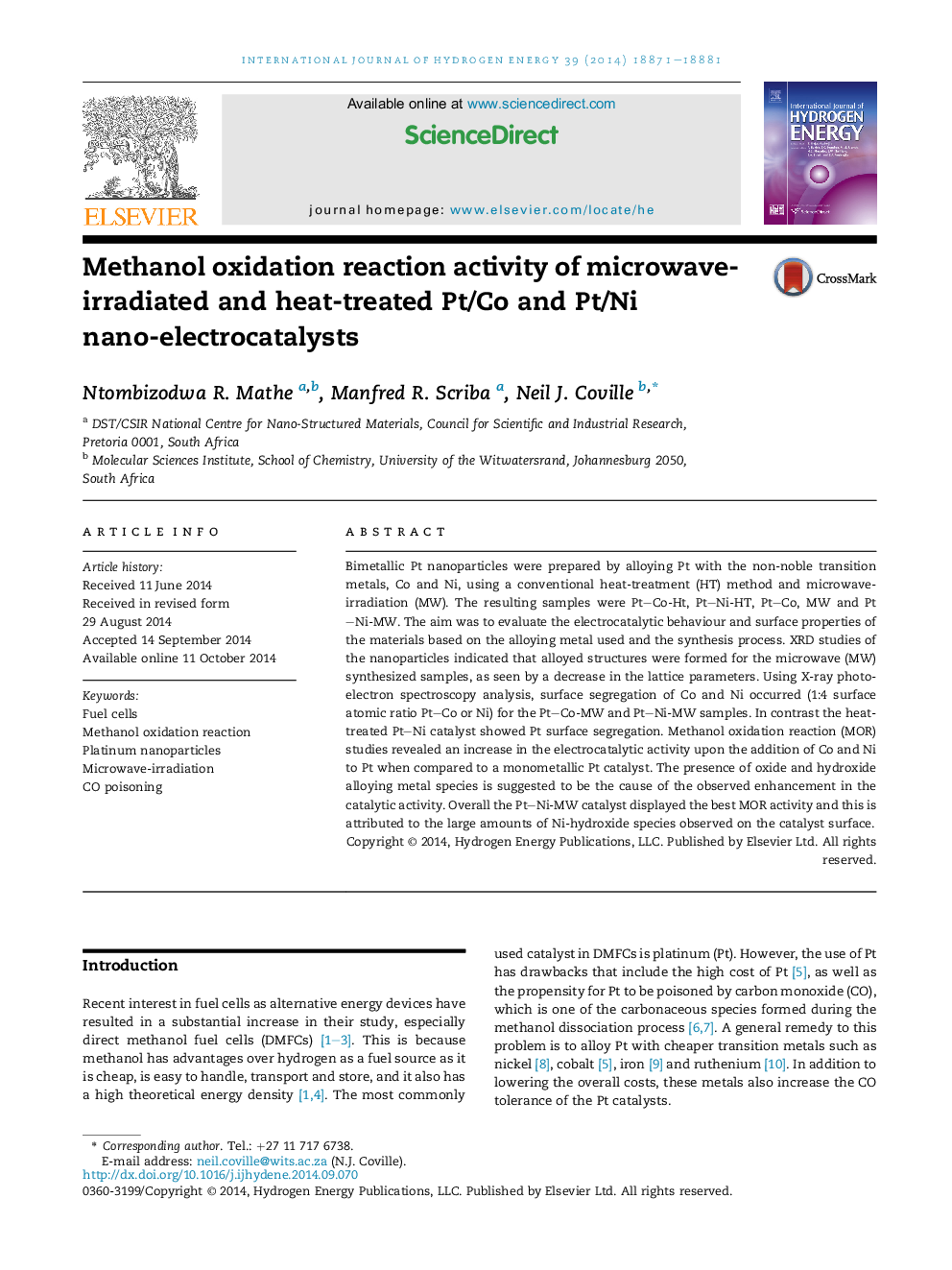| Article ID | Journal | Published Year | Pages | File Type |
|---|---|---|---|---|
| 7717495 | International Journal of Hydrogen Energy | 2014 | 11 Pages |
Abstract
Bimetallic Pt nanoparticles were prepared by alloying Pt with the non-noble transition metals, Co and Ni, using a conventional heat-treatment (HT) method and microwave-irradiation (MW). The resulting samples were Pt-Co-Ht, Pt-Ni-HT, Pt-Co, MW and Pt-Ni-MW. The aim was to evaluate the electrocatalytic behaviour and surface properties of the materials based on the alloying metal used and the synthesis process. XRD studies of the nanoparticles indicated that alloyed structures were formed for the microwave (MW) synthesized samples, as seen by a decrease in the lattice parameters. Using X-ray photoelectron spectroscopy analysis, surface segregation of Co and Ni occurred (1:4 surface atomic ratio Pt-Co or Ni) for the Pt-Co-MW and Pt-Ni-MW samples. In contrast the heat-treated Pt-Ni catalyst showed Pt surface segregation. Methanol oxidation reaction (MOR) studies revealed an increase in the electrocatalytic activity upon the addition of Co and Ni to Pt when compared to a monometallic Pt catalyst. The presence of oxide and hydroxide alloying metal species is suggested to be the cause of the observed enhancement in the catalytic activity. Overall the Pt-Ni-MW catalyst displayed the best MOR activity and this is attributed to the large amounts of Ni-hydroxide species observed on the catalyst surface.
Keywords
Related Topics
Physical Sciences and Engineering
Chemistry
Electrochemistry
Authors
Ntombizodwa R. Mathe, Manfred R. Scriba, Neil J. Coville,
